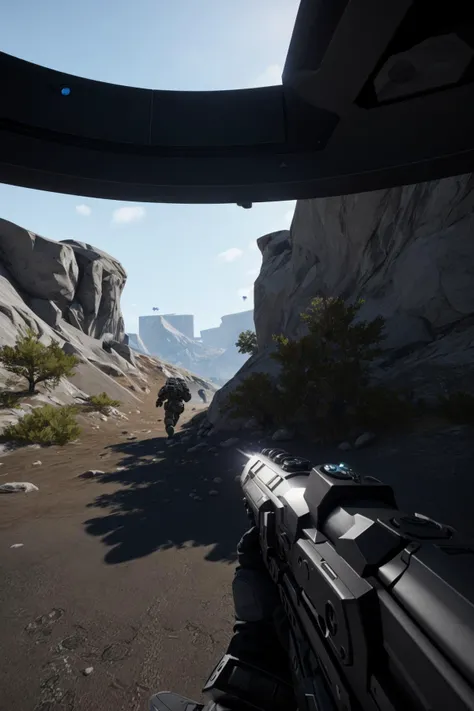A screenshot of a gun in a desert area with mountains in the background

Generation Data
기록
프롬프트
Copy prompts
In a 3D first-person shooter (FPS) video game scene
,
players are fully immersed in an action-packed environment
,
and one key element that enhances this immersion is the Heads-Up Display (HUD)
.
The scene unfolds in a sprawling
,
intricately designed 3D environment
,
offering a realistic and visually captivating setting
.
Players experience the game through the eyes of their character
,
with the first-person perspective providing an unparalleled sense of immersion
.
But what truly sets this scene apart is the meticulously designed HUD
.
Placed at the edges of the screen
,
the HUD provides vital information to the player in a dynamic and interactive manner
.
Health bars
,
ammo counters
,
and objective markers are seamlessly integrated into the visual experience
,
enhancing the player's situational awareness
.
As players navigate their surroundings
,
they can quickly glance at the HUD to check their character's health status
,
ammunition reserves
,
and ongoing objectives
.
This integration of critical information doesn't break the immersion but
,
instead
,
serves to deepen it
.
It creates a sense of urgency during intense combat sequences
,
as players monitor their health and remaining bullets in real-time
.
The HUD is also customizable
,
allowing players to tailor their gaming experience to their preferences
.
They can choose to display additional information or minimize the HUD for a more immersive and challenging experience
.
In summary
,
in this 3D FPS video game scene
,
the HUD plays a pivotal role in enhancing player immersion
.
It seamlessly integrates vital information into the gameplay experience
,
providing real-time feedback and enhancing the sense of urgency and engagement during intense combat sequences
.
It's a testament to the attention to detail that modern video games use to create truly immersive experiences
.
정보
Checkpoint & LoRA

Checkpoint
Realism from HaDeS
0개의 댓글
0
1
0









